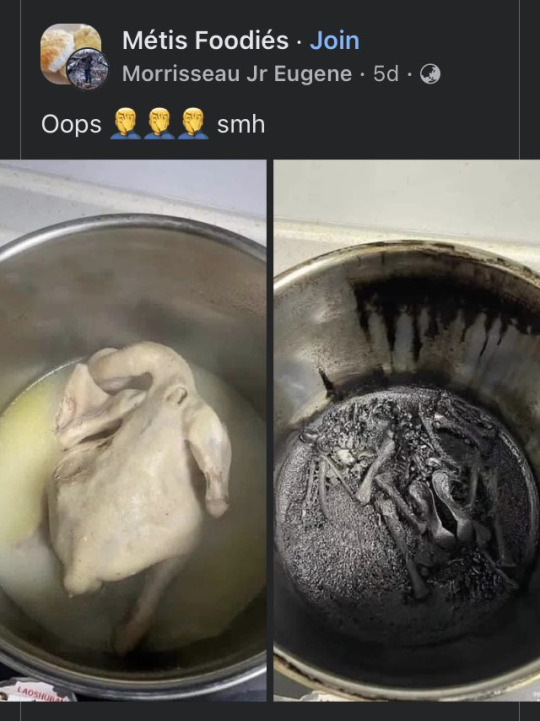She/Her - Older than you think - Here for a peaceful time
Don't wanna be here? Send us removal request.
Text

La reina Maeve, per Joseph Christian Leyendecker; 1911.
4 notes
·
View notes
Text
I simply do not wish to labor for others unless it is a labor of love.
0 notes
Text
hey man, I need to call out today. yeah, sorry, I just suffer from a profound exhaustion whose source is not purely physical, making it impossible to truly cure. yeah I'll be in tomorrow. thanks.
5K notes
·
View notes
Text
BELTANE
May Day / Fire Festival

When is Beltane?
It is celebrated on the first day of May, marking the near-beginning of summertime. May 1st is roughly the halfway point between the spring equinox and the summer solstice.
What does Beltane mean?
"Beltane" can be inferred as the Gaelic word for "bright fire." It signifies that the days are growing longer and warmer, and welcomes fertility, life, and love. The veil between the human world and the spirit world has become thin, connecting us to fairies, nature spirits, and the dead.
Who does Beltane celebrate?
One may worship any fertility deity on Beltane, including Cernunnos, the Celtic God of vegetation, fauna, and fertility; Flora, the Roman Goddess of flowers, fertility, and springtime; and Belenus, the Celtic God of the sun, fire, and healing.
----------
BELTANE TRADITIONS
Work with stones that activate the heart and spirit, including rhodonite, rhodochrosite, rose quartz, emerald, and jade.
Use fresh, sweet-smelling flowers and herbs like roses, dandelions, lavender, mugwort, woodruff, and spearmint, all in which promote solace, pain relief, self-love, and spiritual healing. Mugwort may be beneficial to relieving colic and pain during mensuration.
Prepare and consume meals with honey, mint, and lemon, each considered aphrodisiacs. This mix of sweet and refreshing marks the revival of flora and fauna in the warming months. These three ingredients are also relatively hardy and are available year-round, symbolizing vitality and spirit.
Decorate and adorn yourself with soft pinks, greens, whites, and yellows.
Incorporate animal imagery (e.g., figurines, photographs, drawings, et cetera) of birds, cattle, stags, and other creatures associated with crop, fertility and strength.
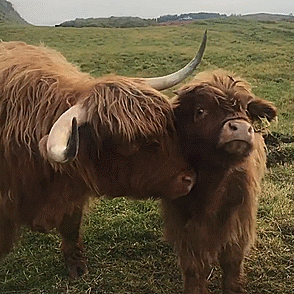
BELTANE ACTIVITIES
Create and/or wear a flower crown. Use seasonal flowers--especially white, yellow, and orange flowers to represent fire--and decorate your hair with them!
Take a ritual bath: add lavender, coarse salts, mint, and rose petals to your relaxing bath.
Light a fire. Safely light a bonfire and indulge as you would like: sit and chat by the fire, feast over it, or safely dance around it. You could also take a blank sheet a paper, write down one thing you would like to achieve in the year to come, and then toss it into the flames.
Dance around the Maypole. The maypole is a ceremonial folk dance performed to ensure fertility and union. People dance around a tall wooden maypole and weave colored ribbons by walking in a circle in opposite directions from each other.
youtube
Make a Beltane altar. In the center of the altar, add an image/icon of a fertility god(dess) of your choice, and decorate around it with seasonal flowers, bells, burning candles, soft colors, and sugar or honey.
Get creative with recipes! Carlota Santos, who is the author of Magika, recommends drinking freshly made lemonade and baking buttery sugar cookies!
Carlota Santos’ Beltane Cookie Recipe
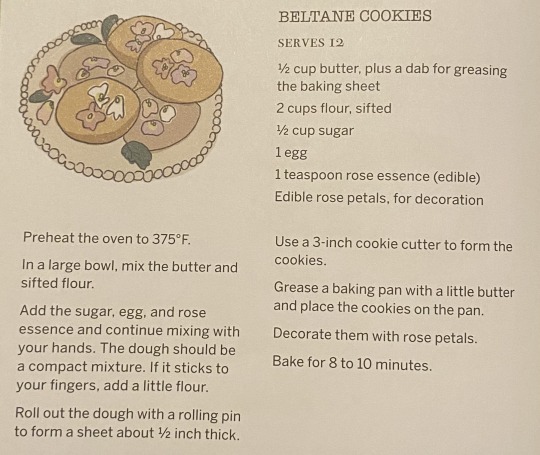
67 notes
·
View notes
Text
In all things, I hope I embody her.
#goddess medb#goddess maeve#irish mythology#irish goddess#queen maeve of connacht#queen medb of connacht
0 notes
Text
Just because Shakespeare said it, doesn't make it the gospel truth.
0 notes
Note
🌻
seeing popular cu tumblr posters talk about medb in violently misogynistic ways just proves how sexist & garbage the “”fandom””” is especially when they ascribe traits that are absolutely not rooted in canon to her (and that’s saying something) and completely disrespect her legend altogether by calling her a whore, slut, bitch, etc. etc.
of course this was jumpstarted by the writers for her in the fate series who decided to make her this complete reversal of the character she was in legend, and even jumpstarted by the people who chose to retell the ulster cycle legends as something that glorified the “”heroism”” of cu and further villified medb despite her motivations almost entirely stemming from her status as a survivor who wanted revenge against her rapist, but the fate fandom takes it one step further and reverses everything where the rapist, cu, is now the poor puppy in need of protection, and medb is this evil emotionally manipulative power kink freak who needs to be beheaded. ive seen people state that they hate her because she “started a war over a cow”, when she wasn’t even the one who initially declared war, it was her drunk male messenger and it was only even after her abuser (the king she offered to trade money for the prized bull for in the first place) declined the trade. medb wasn’t present for any of this, and once again men were in charge of her fate regardless of her choosing.
medb is important to me as a celtic descendent and as a survivor, and im sick and tired of people treating her like shit all around. she’s an interesting, three dimensional, important and powerful woman, and the fate series took her and turned her into a narcissistic bimbo who is obsessed with the inbred son of her rapist abuser for some fucking reason.
it’d be fucking nice if these people could stop worshipping blue riff raff and start actually researching these things and realize their rattailed idiot isn’t nearly as nice of a person as they hope he’d be - and is actually much, much worse.
having aoife not in FGO was such a blessing. i’m just so angry.
3 notes
·
View notes
Text
Trying to find usable info and fellow worshippers but all you get is the perverse fandom of a disrespectful game 🤢🤮
0 notes
Text
☀︎ To anyone who needs to hear it:
Yes, it’s okay if you accidentally set your phone down on your altar for 5 seconds. No, it does not mean you accidentally offered it.
You don’t need to give food offerings if you can’t/it stresses you out. You don’t need to give offerings every day if you can’t/it stresses you out.
It’s not expected of you to do more than you’re capable of. The gods care about you and want what’s best for you. If your practice is burning you out, you’re extending yourself past your bandwidth, or you’re doing things that cause you stress, take a step back and reevaluate why you’re doing it.
Your practice is meant to add to your life, and that means doing things the way they work for you.
305 notes
·
View notes
Text
Being called to follow a Goddess with almost no info is sooooo hard. Like, ma'am....ya not giving me much to work with here, and the PR isn't great. And Her response being "yeah...I know. That's what you're here to fix."
2 notes
·
View notes
Text
Mandatory "I am not speaking as a scholar of Celtic Studies here, this is a shitpost", but we lost something as a society when we stopped translating Medb's name as "The Drunken One" and started translating it as "The Intoxicating One." We were robbed of Wine Mom Medb.
25 notes
·
View notes
Note
what are the best resources for learning more about medb
Good question!
I would generally recommend reading a bunch of stories about her first, and then (if you can access them) looking at some scholarly articles about her. Possibly the most important article I think has been written on Medb is: Sheehan (Sarah), 'Loving Medb,' in Gablánach in scélaigecht: Celtic studies in honour of Ann Dooley (2013): 171–186. This article gives a great overview of previous scholarship and does a good job questioning a lot of the assumptions that have been in play.
For stories about Medb, well! If there was a big website database that contained an annotated list of every single story in the Ulster Cycle and a list of which characters appear in them, as well as the inverse (a list of every text a character appears in), that would sure make this easy, right?! If someone maybe had all that data on hand and just needed funding to host it and have a website.
It'd be crazy if someone had all that.
And just needed funding.

Anyways, if you want a list of recommended stories, I'd check out the following:
Táin Bó Cúailnge (Recension 1; Recension 2).
Táin Bó Fráech: Medb is awful to her daughter mk. 1 (mk. 2 is the Táin).
Tochmarc Ferb: Medb is inexplicably Hector?
Fled Bricrenn: Medb is here (briefly) doing funky stuff.
Mesca Ulad: Medb is here doing other funky stuff.
Ferchuitred Medba: Medb is here, this is why she's queen of Connacht, this is why her sons all have the same name, and tbh, she grooms Ailill and its pretty messed up.
Aided Ailella 7 Chonaill Chernaig: Medb reveals her brutal double standards and has Ailill murdered.
Further, if you have any more specific questions that pop up in relation to these stories, you can just ask me and I can answer them.
31 notes
·
View notes
Text
claiming Medb was an aggressive/strong woman purely because she was a sovereignty goddess that was euhemerized by Christian monks implies that her "unconventional" behavior (woman ruler, woman military leader, sexual being, conniving actions, etc) is only acceptable for a woman if she is isn't a human mortal woman
if she was a historical figure (improbable but not impossible), Boudicca likely would have been her contemporary (iirc there's even a folktale about Medb accepting some of Boudicca's men as refugees). Boudicca was a historically factual human woman AND had the "traits of a sovereignty deity". stop putting legendary women in boxes because you're affronted by them when they have faults, "male" personality traits, and seemingly erratic behavior (seemingly to *us* in the 21st century CE when there could be cultural significance to her actions that we can't understand bc that information is lost to time)
25 notes
·
View notes
Text
Oweynagat Cave from Monumental Ireland
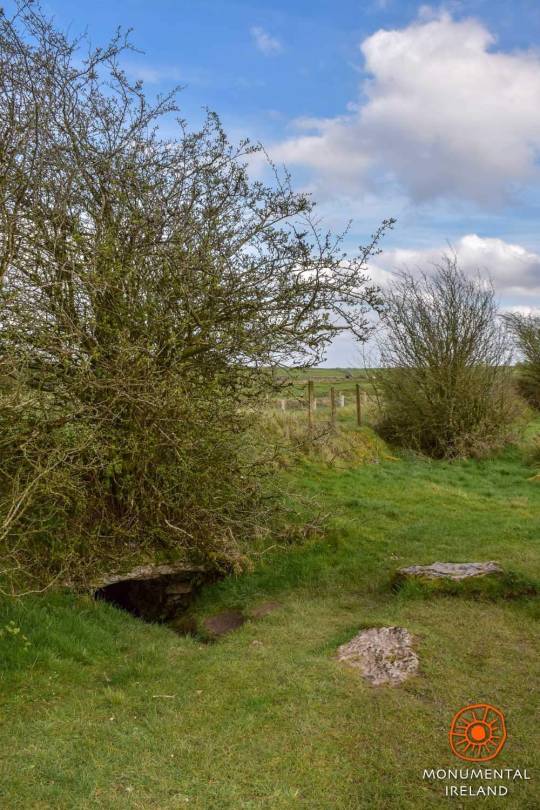
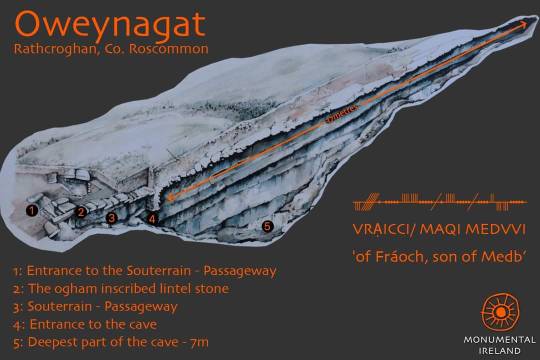
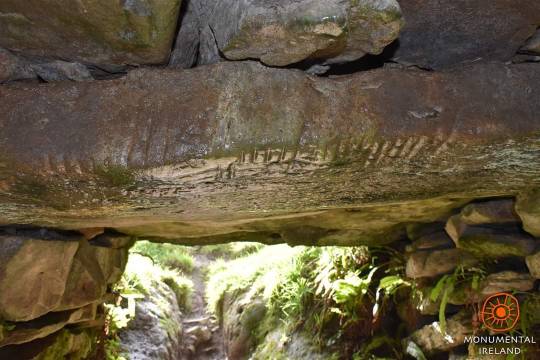
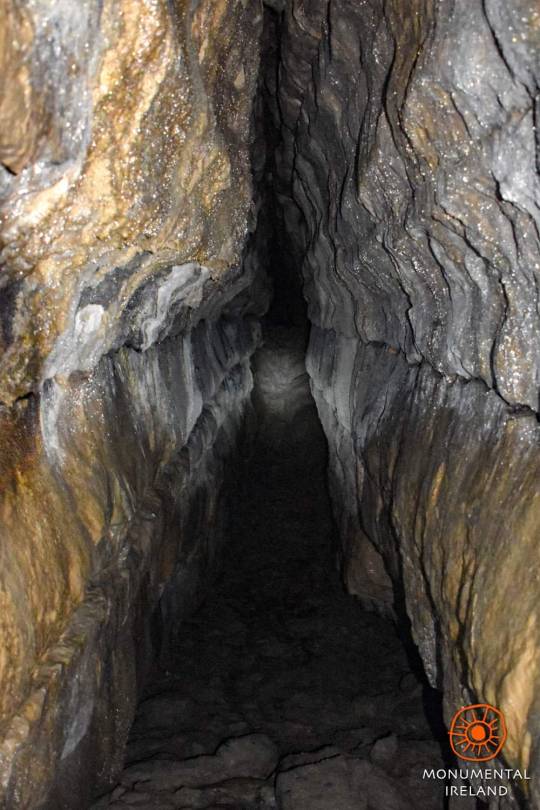
"Within the ritual landscape of Rathcroghan, the ancient royal capital of Connacht, amongst the earthen mounds and ceremonial enclosures, there is an even more ancient place, a place not made by mortals.
Oweynagat, (Uaimh na gCat meaning ‘Cave of the Cats’) is an underground cavern (37m long, 2.5m wide, descending 7m below the ground) created by a fissure in the limestone bedrock. In ancient times, this rift into the earth below was considered to be an entrance to the ‘otherworld’.
In mythology it is called ‘Uaimh Cruachan’ (Crochan’s Cave) or ‘Síd Cruachan’ (Crochan’s (otherworld) Abode). Named after Crochan Crogderg, (meaning ‘blood-red cup’), a mythical character who gives her name to the ancient capital itself: Rathcroghan (meaning ‘the fort of Crochan’).
According to the Dindshenchas (Lore of Places), Crochan was handmaiden to Queen Étaíne and accompanied her mistress when she fled from her husband the High King, with her fairy lover, Midir.
While on the run they stayed at Oweynagat; which, according to the text, is a sort of otherworldly palace. Crochan was so enamoured with the cave/palace that she was granted it by Midir and it was here that Crochan later gave birth to a daughter, Medb, the mythical queen of Connacht.
Access to the cave is though a 10m long dry-stone passageway (souterrain) built in the Early Medieval Period (600-800AD). There is a lintel stone over the entrance with an Ogham inscription that reads VRẠICCI/ MAQI MEDVVI 'of Fráoch, son of Medb’. Although it cannot be proven that this inscription refers to Medb, legendary Queen of Connacht, it is hardly coincidental that the name is found here at her traditional birthplace.
The type of Ogham script in which the name is written indicates a pre-6th Century date, making it the earliest written reference to the mythical queen. Also ‘Fráoch’ was a character from the Táin who was married to Medb’s daughter, Findabair.
Although the name ‘Oweynagat’ is usually translated as ‘the cave of the cats’ (Uaimh na gCat), it may actually be a mis-translation of ‘Uaimh na Cath’ meaning ‘the cave of battle’ . A perhaps more fitting title, given the caves association with The Morrígan, the goddess of battle and strife from Irish mythology, who was also said to have resided there.
According to legend, each Samhain (Halloween), The Morrígan would emerge from the cave on a chariot, driving her fearsome otherworldly beasts out to ravage the surrounding landscape and make it ready for Winter.
“The horrid Morrígan, out of the cave of Cruachu, her fit abode, came”… (Odras - Metrical Dindshenchas)
A poem, entitled Odras, in the Metrical Dindshenchas, explains that Odras , wife of Buchat, lord of cattle, refused to let one of her cows mate with a bull owned by the Morrígan. When the Morrígan came and stole the cow, Odras followed her to Oweynagat.
However, upon arrival at the cave, Odras fell into a deep enchanted sleep. The Morrigan then cast a spell, transforming poor Odras into a river/stream which then bore her name (thought to be the River Boyle).
It was folk tales such as these that led early christian writers to describe Oweynagat as ‘Ireland’s Gate to Hell’.
These days, the best way to visit the cave is via the Rathcrogan Visitor Centre in Tulsk. They provide guided tours of the whole Rathcroghan complex, including a visit to Oweynagat... Along with a brilliant bookshop, and an excellent All-Day Breakfast."
34 notes
·
View notes
Text
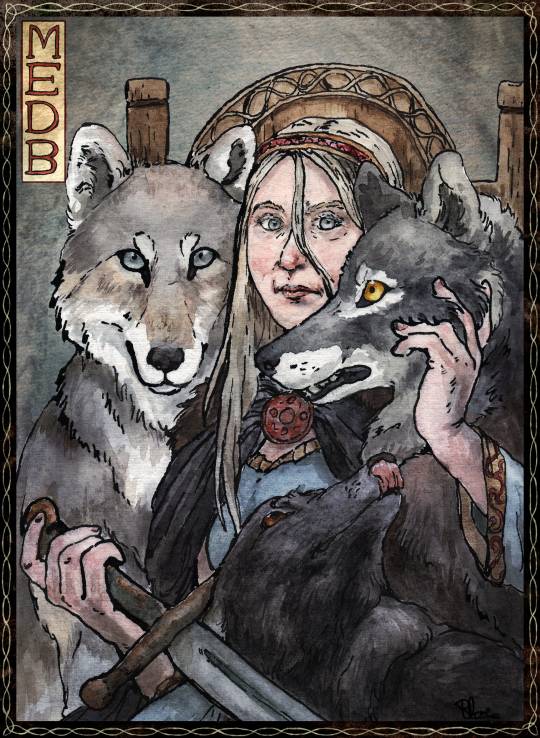
Medb (also known as Medbh, Méabh or the Anglicised version Maeve), ancient Celtic queen of the province of Connacht, Ireland. She is described in legends as being a ‘fair-haired wolf queen’ who was clever, beautiful, ambitious and highly formidable as a warrior and ruler, as well as a recurring adversary to the mythological figure Cúchulainn.
It is unclear whether Medb may have ever existed as a real person or was simply a figure in legends; she may have also have originally been based on an ancient sovereignty or fertility goddess.
135 notes
·
View notes
Text
Blackwall yelling “solas!!! I told you to stay back!!!” when solas falls in combat is so funny to me cause I just imagine Blackwall front lining and here comes mr. dreadwolf like “I am a God I can tank if I Want To” and solas proceeds to get his ass torn in half by a demon as Blackwall watches like

6K notes
·
View notes
